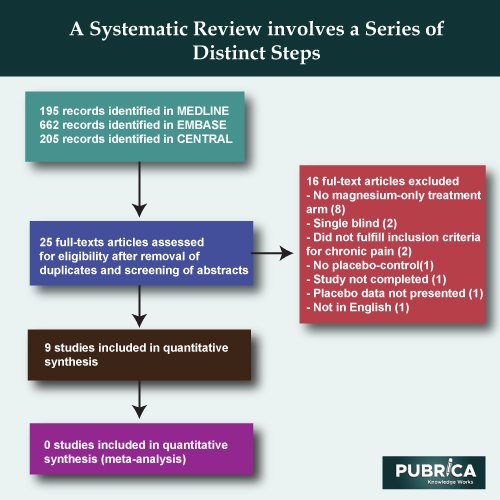
Online Proofing System for faster Publication of researches
November 24, 2021
Clinical Literature Review on Effective Supervision in Practice Settings
December 20, 2021In brief
A systematic review summarises the findings of precisely organized healthcare research (controlled trials) and gives a high degree of evidence on the efficacy of healthcare interventions. The evidence may be used to make decisions and guide healthcare recommendations. These analyses are complex and rely heavily on the available clinical trials, how they were conducted (trial quality), and the assessed health outcomes. Meta-analyses are a standard method used by review authors to pool numerical data regarding treatment outcomes. Next, the authors evaluate the evidence for any advantages or risks associated with such therapies. Systematic Review Writing might summarise the existing clinical research on a topic in this way.
Introduction
The most dependable source of evidence to guide clinical practice is a high-quality systematic review. A systematic review aims to provide a detailed overview of all available primary research in answer to a specific research issue. A systematic review, often known as secondary research, uses all available research (research on research). They are commonly used in guideline creation and are typically needed by research funders to establish the status of current knowledge. The results of systematic reviews are frequently employed in the healthcare field, but they can also be used elsewhere.
The process used in Conducting a Systematic Review is detailed and precise to reduce bias and increase the reliability of the results reached. A systematic review has the following characteristics:
- explicit objectives with predetermined study eligibility and relevance criteria;
- transparent, repeatable methodology; thorough search to find all suitable studies;
- a systematic performance and synthesis of the included research,
- as well as an assessment of the validity of the conclusions of the included studies
A systematic review involves a series of distinct steps:

- Establish a research question: A well-defined review question is the backbone of the Clinical Trial Systematic Review Services systematic review, similar to a precise specific goal in a clinical study. A good review question is clinically relevant, not too broad but targeted, and usually identifies the population, the intervention or exposure, and the desired outcome(s).
- Clearly define the criteria for inclusion and exclusion: Eligibility requirements are derived mainly from the study question. PICO (population, intervention, comparator, outcomes) is an abbreviation that helps identify which patient population, treatments or exposures in the treatment and control groups and outcome(s) research must report being eligible for inclusion. Other criteria, such as research design, publication date, or language, might be used to include or exclude people.
- Conduct a thorough literature search: Bibliographic databases like PubMed, Web of Knowledge, Scopus, and EMBASE are commonly used to conduct literature searches. The study selection criteria must be mapped onto sensible search phrases, which must then be combined coherently using Boolean operators. Extra search strategies, such as reviewing reference lists, conference proceedings, or trial registries, might help you find unpublished research or additional references.
- Select studies: Titles and abstracts are first evaluated for inclusion and exclusion criteria. Full-texts of possibly suitable references are retrieved to determine which publications to add further depth. Two or more researchers should independently pick studies, extract data, and assess quality, with the search and selection approach outcomes shown in a flow diagram.
- Extract data: The kind and amount of data extracted depends on the review’s goal and scope, but typically these data include study design type(s), patient characteristics, and outcome data. A well-designed data extraction procedure and form facilitates consistent and thorough data extraction.
- Assess the quality of the studies included: There is a range of quality evaluation techniques for different research types (e.g., Cochrane risk of bias tool; Grading of Recommendations Assessment, Development, and Evaluation [GRADE]; Newcastle-Ottawa scale). The quality evaluation findings are critical for readers to determine if the research provided trustworthy and generalizable information. To prevent a “garbage in, garbage out” impact, authors occasionally remove low-quality papers altogether.
- Analyze the data, display it, and analyze it: A meta-analysis is frequently employed to combine quantitative data, although not always. However, a meta-analysis should not be undertaken if the included studies are not sufficiently comparable to allow for significant data synthesis. For example, here found a lot of clinical and methodological variability (e.g., different chronic pain conditions, treatment and follow-up durations, and magnesium formulations). Therefore they did a qualitative analysis and presented the findings descriptively.
About Pubrica
Pubrica’s team of researchers and authors develop Scientific and medical research papers that can be indispensable tools to the practitioner/authors. Pubrica medical writers help you write and edit the introduction by introducing the reader to the shortcomings or empty spaces in the identified research field. Our experts know the structure that follows the broad topic, the problem, and background and advance to a narrow topic to state the hypothesis.
References
- Park R, Ho AMH, Pickering G, Arendt-Nielsen L, Mohiuddin M, Gilron I. Efficacy and safety of magnesium for the management of chronic pain in adults: a systematic review. Anesth Analg. 2020;131:764–775.
- Vetter TR. Systematic review and meta-analysis: sometimes bigger is indeed better. Anesth Analg. 2019;128:575–583.
- Schober P, Vetter TR. Clear study aims and hypotheses in a research paper. Anesth Analg. 2019;129:3.
